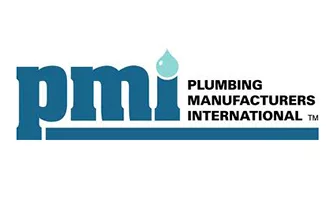Plumbing Manufacturers International has expressed concerns to Washington state legislators that proposed legislation, ESHB 2327, to ratchet down flow rates below federal WaterSense levels without proper research may result in unintended consequences that could endanger public health. A vote on the measure may come as early as this week in the Washington State Senate.
“Products earning the EPA’s WaterSense label have been certified to be 20 percent more water efficient than the federal standards while meeting high performance and safety standards,” said Kerry Stackpole, PMI CEO/executive director. “Going below the WaterSense levels, as proposed in Washington state, may cause product performance issues, as well as public health risks.” Scientists have hypothesized that there may be a link between low flow rates and outbreaks of waterborne disease, including Legionnaires’ disease, he stated.
PMI is urging legislators to further study the impact of reduced flow rates on state drinking water, wastewater and recycled water infrastructures, and to gain input from drinking water and wastewater utilities in the state, Stackpole said. PMI has published educational content about Legionella, the bacteria that causes Legionnaires’ disease.
Washington’s flow rates are now in line with federal regulations. The proposed legislation would reduce them to the WaterSense level for toilets and below WaterSense levels and equal to California levels for urinals, showerheads, and bathroom faucets. California is the only state with plumbing standards more stringent than WaterSense levels, having implemented them in response to the state’s drought emergency.
EPA funding two studies measuring potential link between low flow rates and waterborne disease
PMI cited two research projects that the EPA is funding to measure the potential impact between low flow rates and waterborne disease outbreaks and other water quality problems. The first with Drexel University is titled “Water Conservation and Water Quality: Understanding the Impacts of New Technologies and New Operational Strategies.” The second, with Purdue, Michigan State and San Jose State, is titled “Right Sizing Tomorrow’s Water Systems for Efficiency, Sustainability, and Public Health.”
As indicated during a recent EPA webinar, both projects hypothesize that low flow rates have contributed to waterborne disease outbreaks and other water quality problems in building plumbing systems.
The most common waterborne disease is Legionnaires’ disease. The Center for Disease Control and Prevention (CDC) reported about 6,000 cases of Legionnaires’ disease in 2015, with reported cases steadily on the rise over the past several years. About one in 10 cases of Legionnaires’ disease results in death. Washington state saw 72 cases of Legionnaires’ disease in 2016, resulting in 10 deaths, according to a report in the Seattle Times. The Washington State Department of Health has published surveillance and reporting guidelines for waterborne disease outbreaks.
PMI contends that experts in the field of waterborne pathogens, including Dr. Marc Edwards, a Virginia Tech professor who was among the first to recognize the Flint lead-in-water crisis, have recognized a possible correlation between low water flows and increases in outbreaks of waterborne diseases such as Legionnaires’ disease.
Low flow rates increase water age and may contribute to disinfectant depletion and biofilm growth
Low flow rates result in increased water aging in distribution and plumbing systems. Low flows increase the transit time between the point of treatment at the water utility and the moment the water is used or consumed. An EPA study, “Technologies for Legionella Control in Premise Plumbing Systems: Scientific Literature Review,” showed that this increased time spent in a plumbing system can dissipate disinfection agents and foster the growth of biofilms that amplify the growth of opportunistic pathogens in plumbing systems.
PMI also referenced a white paper, “Adapting to Change: Utility Systems and Declining Flows,” published in November 2017, authored by organizations including WaterReuse California, Water Research Foundation and Association of California Water Agencies. The paper examined the impacts of reduced indoor water usage in California on drinking water, wastewater and recycled water infrastructures due to Governor Jerry Brown’s emergency conservation mandate to address the recent drought. One of the policy recommendations of the white paper is that a state or jurisdiction should consider the impact on its utility infrastructure before lowering the water consumption levels of plumbing products below current levels.
The potential impacts on infrastructures identified within the white paper include:
- On page 4 for water distribution systems: “With declining water system flows, drinking water has a longer residence time in pipes, leading to chemical, biological, and physical water quality issues and potentially compromising public health and compliance with the Safe Drinking Water Act, particularly for disinfection by-products, coliform bacteria, chlorine residual, and lead and copper action levels.”
- On page 4 for wastewater conveyance systems: “Declining system flows decrease wastewater flows and may increase pollutant and solids concentrations, which increase blockages, odors, and corrosion in pipes. This leads to increases in operation and maintenance costs, odor complaints, and an accelerated degradation of infrastructure.”
- On page 5 for wastewater treatment plant operations: “Declining flows change the characteristics of wastewater, including the quantity and quality of wastewater treatment plant influent, causing impacts and stressing treatment processes as salinity, ammonia, and biochemical oxygen demand concentrations increase beyond design specifications.”
- On page 5 for recycled water projects, “Declining flows can alter treatment and cost-effectiveness of recycled-water infrastructure by altering factors considered in system design, like anticipated flow and water quality.”




